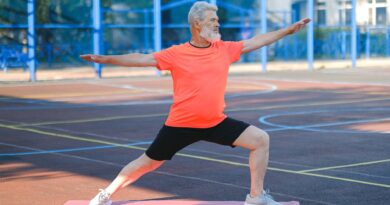The one type of exercise you’re not doing – but should be
Fit this in after post-Pilates or when you’re done with an intense HIIT session.

Photo: iStock
Cross your legs and hope for the best! Hands up if you’ve every opted for that strategy when a bout of hayfever strikes? How about when you are coughing up a lung? Or skipping in your boxing class?
As winter arrives, along come serious challenges for your pelvic floor muscles. All that coughing and sneezing is enough to make most women aware of this overlooked muscle group.
Your pelvic floor is part of your core muscle group, so they are working when you are busy with Pilates or yoga. You’ve made an effort to stay fit and healthy throughout summer, so why now the ‘wee’ problem? Normal exercise is not enough to really strengthen your pelvic floor.
Combine pelvic floor muscle training with regular workouts. Enjoy your Pilates class and then add your pelvic floor workout at the end. Or after your walk, sit on the park bench and get your squeezes done – or as my girlfriends and I laugh about – your daily vagercise!
But it’s cold outside
With the cooler weather approaching, it makes sense to take your workout indoors.
There are some fabulous apps and online program that make working out in your lounge room a breeze. It’s always great to hear advice from experts, work out at a flexible time, and in a comfy outfit (hello no bra!).
With so many options you’re bound to find a program that suits you. However, most programs won’t automatically include pelvic floor exercises, so this is something you're going to have to make a conscious effort to add in yourself…
Am I doing it right?
Are you confident that you are doing it right?
Of course you want to be sure your technique is correct, otherwise what's the point? This might help…
Sit up straight, feet flat on the floor. Place your hands gently over your lower tummy.
Let all the tension go from your belly, bum and thighs.
Now, imagine you have a tampon in your vagina and someone is trying to pull on the string and remove it.
Feel the inside muscles gently engaging to resist the movement of the tampon. That’s your pelvic floor muscles!
Another way is to gently squeeze around your back passage, as if you are trying to hold in wind. Make sure you aren’t squeezing your bum or inner thighs.
Once you have the feeling of the right muscles contracting, try to hold the squeeze for a few seconds. Keep breathing.
Aim for 5 seconds of squeezing, then a 5 second rest. See if you can repeat this for 5-10 reps.
It might feel a bit weird to begin with, but eventually you will get the hang of it. The exercise gets easier as the muscles get stronger.
Why do I need to do these?
Pelvic floor issues often arise in child bearing years, when pregnancy causes the muscles to stretch.
As we get older, our hormones change and our muscles naturally become weaker. But the great news is that most problems can be managed with a simple pelvic floor muscle exercise program. With regular exercise your pelvic floor will get stronger, regardless of your age.
Seek help from a women’s health physiotherapist if you
- Cannot feel a definite squeeze
- Cannot feel your muscles hold or relax
- Feel that you aren’t making progress with your exercises
- Feel no improvement in your bladder or bowel control despite practising pelvic floor exercises regularly
- Have back pain, which might interfere with your pelvic floor muscle function
May 1, 201711:03am




